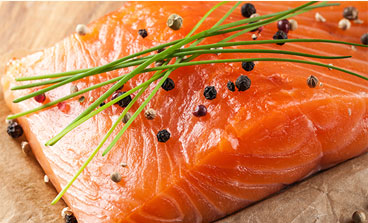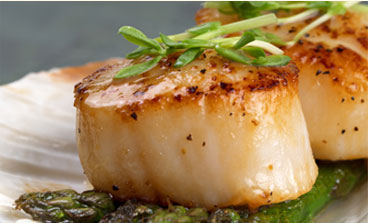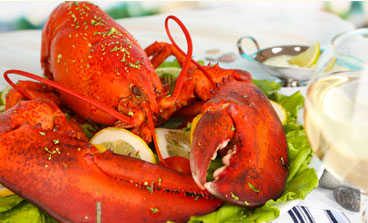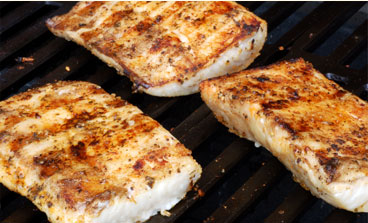
Fish and Food Safety
- Always marinate fish in the refrigerator, never at room temperature.
- If you see "PUFI" on the package, you know the fish has been "packed and processed under federal inspection," with an inspector present.
- Clams that don't open when steamed or boiled are dead, and most likely contaminated. Throw them away!
- The safest and best eating fish are aquaculture raised Trout and Catfish, Halibut, Turbot, Skipjack, Sole and Pollack.
- Cooked crab shells should be bright red in color and have little or no odor.

Preparing Fish and Seafood
- Thaw frozen fish in milk. It replaces that frozen taste with a "fresh caught" flavor.
- Don't thaw frozen fish completely before cooking, to prevent it from becoming dry or mushy.
- Never keep a shellfish in fresh water. It quickly kills them.
- Frozen fish can be skinned easier than fresh fish.
- Soak oysters in club soda for about five minutes to make them easier to remove from the shells.
- To de-vein shrimp, hold it under a slow stream of cold water, running the tip of an ice pick down its back.
- Avoid making shrimp tough by first cooling under very cold water for one or two minutes.

Cooking Fish and Seafood
- Always cook fish at a low to moderate temperature (no more than 350°) to keep it moist and tender.
- To prevent sticking when frying fish, sprinkle the bottom of the pan with a little salt or use unsalted butter.
- Making clam chowder? Don't add the chopped clams until the last 10 minutes of cooking, and they won't be mushy or tough.
- Add a little grated onion to the butter when cooking fish, for great flavor!
- Wrinkle up the tinfoil before you put fish on it or wrap fish in it, to bake in the oven. The fish will brown better, with no sticking.





